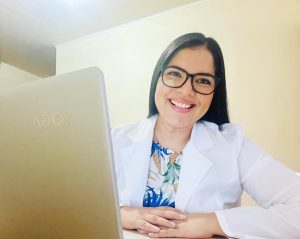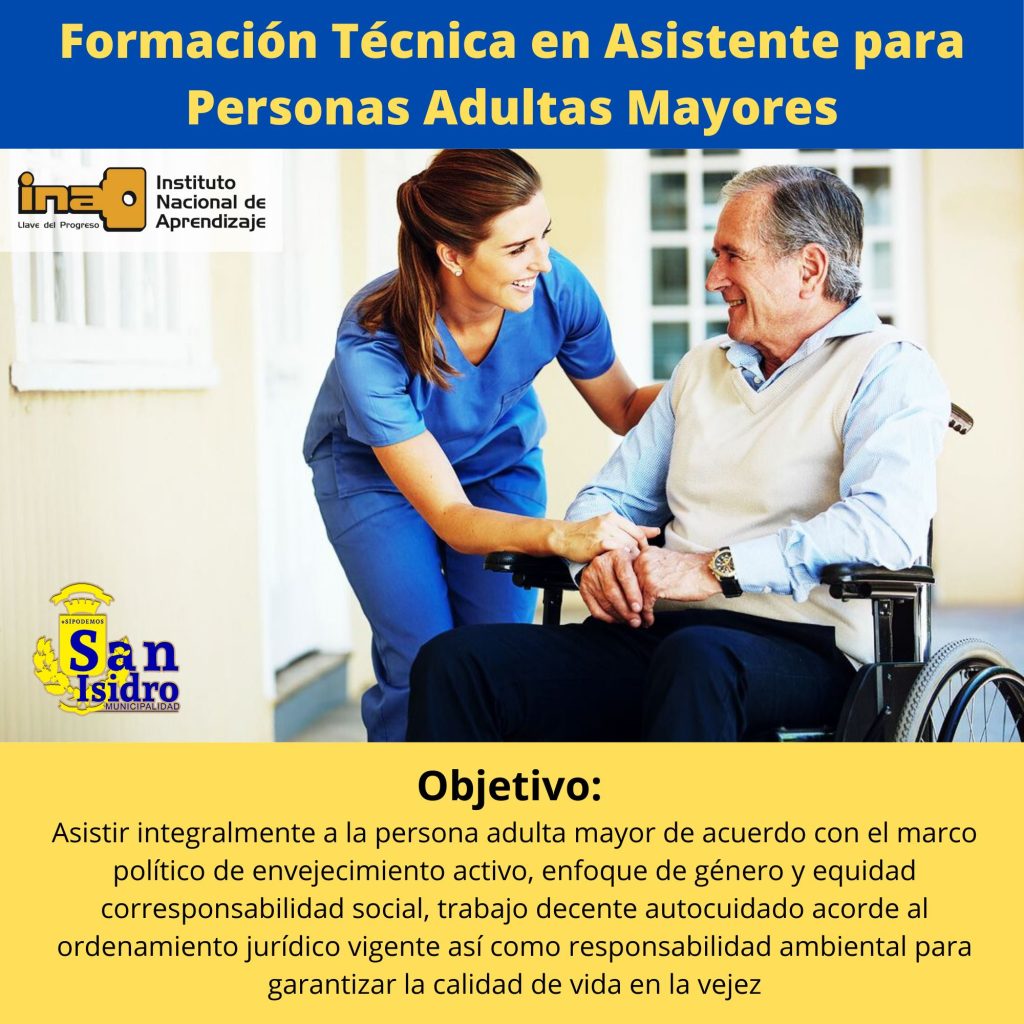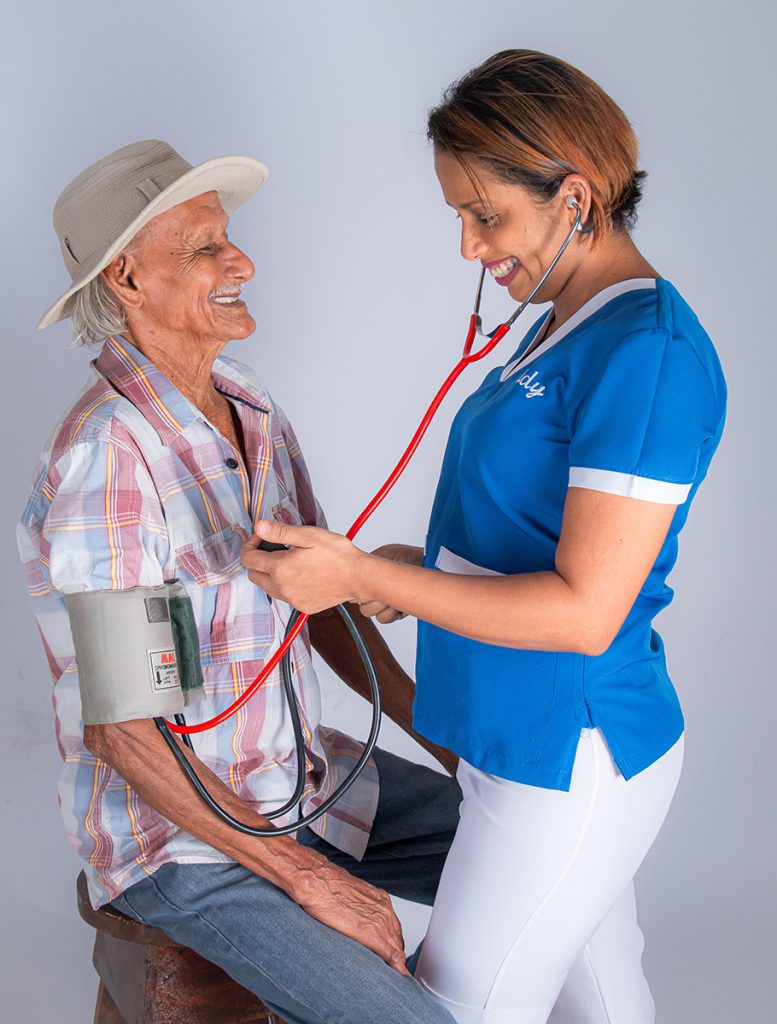Paola Mejías Molina was in the last months of her nursing degree at Santa Lucía University when she decided to start a business: highly qualified babysitting services for tourists. She landed and pulled off her first job without even knowing how to speak English.
Today, eight years later, she has that nursing degree and is CEO of Cuidarte CR. She not only speaks basic English, but also has a network of nearly 2,000 nurses, and nursing assistants throughout the country, who, under contract with the company, provide care to people of all ages and health conditions, in all areas of the country.
“You ask me for a nurse right now, anywhere in the country, and I can solve it for you in 30 minutes,” says Paola. However, she is clear about one thing.
“I’m aware I’m targeting a very privileged sector,” she says. “There are societal needs that are not being covered by any care company in Costa Rica, because the budget that [families] manage is very limited.”
A professional nursing service like the ones offered by Cuidarte CR can range from visits to apply injections to caring for sick people 24/7. Paola explains that hiring a home nursing service 24/7 can cost up to ₡4,000,000.00 (approximately $6,500) per month. She also explains that nurse services can cost up to ₡12,000.00 ($20) per hour.
“It’s a profession, so you charge,” explains Paola. “I love what I do, I love to help, but it is a professional service. I charge. Achieving that change is the tricky thing.”

Although Paola openly defends the nursing profession, she also says that she is clear that care work does not always require health professionals.
“It is part of the education that Costa Ricans need about the differences between a caregiver, a patient assistant, and a nurse,” says Paola, explaining that each group receives different training to assume different levels of care. “There are many patients who require only company. Verifying that the person took their oral medication can be done by a family member.”
However, Paola emphasizes the importance of training for any caregiver, whether family or hired.
“There are tools for it. Online, you can take free courses—on patient safety, for example. All this helps caregivers who are interested in growing and offering something more to the client,” says Paola. “If a babysitter who has [training in] infant massage, early stimulation, pediatric CPR—wow, what parent would say no to babysitting? It’s about getting out of your comfort zone.”
“It is not the same to say ‘I take care of older adults,’ and to say, ‘I am a specialist in geriatric care.’ Do you see the difference? Or ‘I am a technician in the care of the elderly.’ If you say it like that, you can charge more.”
For Paola, training people as care technicians is the solution for families who do not have the ability to pay to hire health professionals like those her service hires.
INA’s caregiver training programs
Leidy Chaves Martinez assists elderly people and people with disabilities in Liberia, Guanacaste. She is a graduate of the National Training Institute (INA), with three certificates: Comprehensive Assistant for the Elderly, Assistance for People with Disabilities, and Assistant for Dependent People.
“I had studied care for the elderly” at a private institute, says Leidy, who explains that when she learned that she could train at the INA, she jumped at the chance. “The INA is an entity recognized for technical certifications. I did it to have a better academic background.”
Since 2011, the Health, Culture and Crafts Nucleus of the INA has included training programs for caregivers of children, adolescents, and the elderly.
For the care of older adults, the INA provides training as ‘Assistant in comprehensive care for older adults,’ which requires an investment of 750 hours of training. It’s based on the Qualification Standard of the National Framework of Qualifications of Education and Vocational Technical Training of Costa Rica.
Also since 2011, people have been trained as ‘Assistant in comprehensive care for people from 0 to 6 years old’ (673 hours of training), and ‘Assistant in comprehensive care for people from 7 to 17 years old’ (701 hours of training) . These programs have recently been modified to comply with the provisions of the National Qualifications Framework, and thus ensure that people graduate with a recognized technical degree. Today, the program for children from 0 to 12 years old is called ‘Assistance for children.’
In addition, since 2017 and to respond to the provisions of Law 9379 (Costa Rica’s Law for the Promotion of Personal autonomy of People with Disabilities), the INA provides training for ‘Personal assistance for people with disabilities.’ In this program, after 168 hours of training, the person receives a qualified worker certification. With that certificate, they can offer private services and also opt to join the roster of professionals hired by the National Council for Persons with Disabilities (CONAPDIS) in its autonomy program. This program helps people with a disability to improve their quality of life through support staff.

Leidy is one of these support professionals. She says that when she began her training at the INA, she did not plan to work as an assistant for people with disabilities, but since February 2022 it has been her main source of income. Leidy does this work 3.5 hours a day, from Monday to Friday, to a person with a disability. On weekends, she works assisting older adults.
María Auxiliadora Alfaro Alfaro, head of the INA Health, Culture and Crafts Nucleus, says that since the program’s inception, 2,342 people have graduated from the four programs. Of these graduates, 92% are women and 8% are men.
“[The programs] are open to anyone who wants to train as a personal assistant,” says María Auxiliadora. However, many of their courses have responded to institutional demand. For example, they have trained personnel from the National Children’s Trust (PANI), and community childcare provider referred by the Mixed Institute for Social Assistance (IMAS). By 2023 they are organizing training for the people who work in the Casa de la Alegría, which are care centers for children of migrant families who come to work during the coffee harvest in the Southern Zone and Los Santos.
The opening of one of these courses in any of the 54 INA training centers also depends people participating in training fairs and pre-registering in order to determine if there is sufficient demand for individuals.
“What we ask is that they’ve finished at least elementary school, so that the person knows how to read and write, and are over 18. Other than that, there is no limitation. They can be employed or unemployed,” says María Auxiliadora, describing the INA’s entry requirements.
She also explains that the INA’s ability to offer these courses depends on its budgets and human resources.
“These programs are multidisciplinary. We even have an art teacher to teach certain skills,” explains María Auxiliadora. “They provide ideas for activities that you can carry out with the older adults you are going to work with. The rest of the teachers are from the health area.”
Like Paola, María Auxiliadora emphasizes the importance of understanding what scope of these professionals’ responsibilities: “The idea is to have people trained to provide a quality service in caring for people. We hope that our graduates are people who can offer this support and quality service in an integral way, without transcending skill areas, because a nurse or a doctor is not the same. We have great respect for the fields of action of these professionals. What we want is for our graduates to be able to offer a quality service, at their technical level.”
Where can a qualified caregiver work?
Paola, founder of Cuidarte CR, says that her company today focuses on offering services that require a nursing professional, or that are occasional. For the time being, the company has stopped offering full-time care services for the elderly and children. Why? She explains that people continue to find the service expensive, and the administrative workload is very high. However, she does not rule out resuming full-time caregiving in the future, especially if trained personnel such as INA’s graduates can be found and hired.
“If at some point I develop a project that offers basic babysitting services, I wouldn’t hesitate to hire a person who was trained that way,” says Paola. “They’re hired frequently as a preschool assistant, in daycare centers, because they are highly trained to attend and perform those functions, which a teacher or a preschool education graduate does not necessarily have to do.”
María Auxiliadora explains that people certified by the INA have another advantage beyond the institutional support that Paola is talking about.
“In [INA] programs, except for people with disabilities, [students] have a supervised internship that normally lasts around 96 hours in order to be certified,” she says. “This opens a window for them as well. Where are these practices carried out? In care homes. Many of these people are hired by those same homes.”
However, she also explains that the INA encourages self-management of its graduates so that they can offer their services privately.
That is what Leidy does. She used to work for an agency in the Greater Metropolitan Area (GAM) as a caregiver for the elderly.

“Since I stopped working with the agency, I market my own work. I work through professional service contracts,” explains Leidy. Although her work to support people with disabilities is financed by CONAPDIS, she is hired directly by the individual and not by the institution.
“I have been handling [my work for the elderly] on the weekends,” she says, saying that she does this to generate more income for her family. “I want to be an entrepreneur, to have a micro-enterprise that provides services here in Guanacaste. That is my goal—and to employ people who are trained at INA.”
The challenges of fostering a caregiving economy
“We as caregivers are left very unprotected,” says Leidy at the end of the interview. “It is quite a challenge. Those of us with training from INA—I spent a year and a half in the program—see all these cheap institutes come and offer a title of patient assistant, where people pay ₡150,000.00 (about $240) and are done in three months. That is your competition.
“The tables of care costs are established, but these people, in order to get a job, offer a much lower price per hour than I do, so this affects you. We’d like [the certificate] to be required.”
As with any profession, if the Costa Rican government wants to promote a caregiving economy, it must also regulate training. Paola has also seen this reality affect nursing professionals.
“For me, there are maybe two or three institutes in Costa Rica that are endorsed—that I say, yes, that’s a patient assistant course that lasts 10 months, a year, that teaches them body mechanics, that teaches them nutrition of the older adult,” she says. “But for me, it is a requirement that the assistant must always be accompanied by a health professional.”
In addition, Leidy and Paola are clear that to build their companies, they must also do a lot of mythbusting.
“What happens is that here [in Guanacaste], having to pay for caregiving… People here, being a rural area, always focus [responsibility] on the family, on the daughter who is always at home who takes care of the parents,” says Leidy. She says that this is why, at the beginning of her career, she ended up working at the GAM.
Paola also knows those obstacles. She says that, in her case, she feels the difference when the person who hires a caregiver is younger: she thinks that young people, more than their older counterparts, understand that this is a service with a cost. She hopes that generational changes will help promote a greater appreciation of caregiving work.
“It’s changing the chip that the mother is unconditional,” says Paola. “Everything starts at home: changing that chip, children participating more, fathers participating more. That’s where the foundation begins.”





